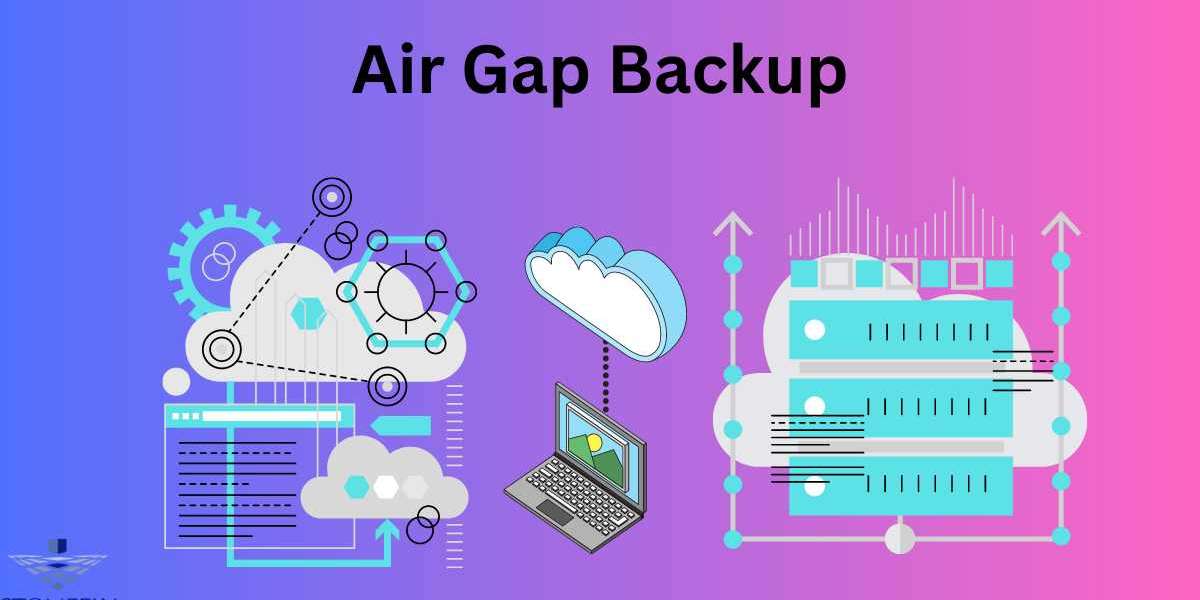Air Gap Backup: Fortifying Data Security Beyond Digital Frontiers
As someone deeply entrenched in the digital realm, I've come to recognize the paramount significance of data security. In this era of interconnectivity, where technology is an inseparable part of our lives, safeguarding sensitive data has risen to the forefront of our concerns. Among the myriad of security strategies, one approach that stands out is the concept of "Air Gap Backup." In this article, we'll delve into the intricacies of air gap backup, unravel its mechanics, explore its advantages, delve into its implementation steps, and highlight best practices to revolutionize data security.
Understanding Air Gap Backup
In the dynamic landscape of cybersecurity, the term "air gap" alludes to the physical isolation of two entities to thwart unauthorized access. When applied to data backup, air gap backup involves deliberately creating a separation between the primary network and the backup system. This "air gap" acts as a digital barricade, providing an additional layer of defense against cyber threats.
How Air Gap Backup Works
The principle underpinning air gap backup is deceptively simple yet profoundly effective. By physically disconnecting the backup storage from any network or internet connection, the backup data is sequestered beyond the digital realm. This isolation ensures that even in the event of the primary network falling victim to cyberattacks or data breaches, the backup data remains invulnerable to such threats.
The Advantages of Air Gap Backup
Air gap backup offers an array of advantages that make it an enticing choice for both organizations and individuals seeking robust data security.
1. Enhanced Cybersecurity
By isolating the backup data from online networks, air gap backup establishes an unparalleled level of cybersecurity. Cybercriminals and malware are rendered powerless against a physical barrier, making even the most sophisticated cyberattacks ineffective.
2. Alleviation of Ransomware Threats
Ransomware attacks have surged in recent times, encrypting data and demanding a ransom for its release. Air gap backup nullifies this threat by preventing ransomware from accessing offline backup files, rendering such attacks futile.
3. Ensuring Uninterrupted Operations
In the face of network failures, natural disasters, or unforeseen disruptions, air gap backup ensures data resilience. This capacity is indispensable for maintaining business operations and personal data integrity.
4. Protection Against Insider Threats
Air gap backup minimizes the risk posed by insider threats, as even those within the organization cannot compromise offline backup data.
5. Long-Term Data Preservation
Offline storage ensures data longevity by protecting it from degradation that can occur in online storage systems over time.
6. Regulatory Compliance
Industries with stringent data protection regulations can rely on air gap backup to meet compliance requirements effectively.
7. Secure Data Transfers
Offline backups are immune to interception during data transfers, providing a secure method of moving sensitive information.
8. Reducing Data Loss Costs
By preventing data loss, air gap backup saves organizations from costly downtime and data recovery efforts.
9. Unaffected by Software Vulnerabilities
Air gap backup is immune to software vulnerabilities and exploits that could compromise online backup systems.
10. Privacy Assurance
Air gap backup enhances privacy by limiting access to sensitive data to physical locations only.
11. Protection Against Zero-Day Attacks
Even zero-day vulnerabilities and attacks can't breach the offline barrier of air gap backup.
12. Immutable Data Protection
Data stored offline is inherently resistant to tampering, providing a layer of immutability for critical information.
Implementing Air Gap Backup
Implementing an effective air gap backup system calls for meticulous planning and careful execution. Here are the steps to consider:
1. Identify Critical Data
Determine which data requires air gap protection based on its sensitivity and importance.
2. Choose Storage Media
Select appropriate offline storage media such as external hard drives, tapes, or dedicated servers.
3. Establish Storage Location
Pick a secure and physically isolated location for your offline backup storage.
4. Define Backup Schedule
Set up a regular schedule for updating your offline backup to ensure data currency.
5. Implement Access Controls
Establish strict access controls to the offline backup storage to prevent unauthorized access.
6. Periodic Testing
Regularly test the restoration process from the offline backup to verify its integrity.
7. Encryption
Implement encryption for both data at rest and during data transfers to enhance security.
8. Disaster Recovery Plan
Incorporate air gap backup into your disaster recovery plan for comprehensive data protection.
The 3-2-1 Backup Process
A recommended strategy for data backup is the 3-2-1 approach:
3 Copies
Maintain three copies of your data: the primary copy and two backups, one of which is an air gap backup.
2 Different Media
Use at least two different storage media for your backup copies to reduce the risk of simultaneous failures.
1 Offsite Location
Store one of the backup copies, preferably the air gap backup, in an offsite location for additional protection.
Best Practices for Air Gap Backup
Adhering to best practices enhances the effectiveness of air gap backup:
Regular Updates
Frequently update the offline backup to ensure its currency and relevance.
Secure Physical Location
Choose a secure and climate-controlled location for storing offline backup media.
Monitoring and Maintenance
Regularly monitor the status of your offline backup and perform maintenance as needed.
Access Controls
Implement strict access controls and authentication mechanisms to prevent unauthorized access.
Testing and Validation
Regularly test the restoration process from your air gap backup to confirm its reliability.
Conclusion
In a digitized landscape fraught with cyber risks, air gap backup emerges as a formidable solution to shield your invaluable data. The introduction of a physical barrier between your backup and potential threats guarantees that your data remains impervious to online vulnerabilities.
FAQs
Q1: Is air gap backup suitable for personal use?
A: Absolutely. Air gap backup benefits both individuals and businesses seeking enhanced data security.
Q2: Can I still access my backup data easily?
A: While air gap backup emphasizes security, controlled procedures can be established to manage access to your backup data effectively.
Q3: How does air gap backup complement existing cybersecurity measures?
A: Air gap backup doesn't replace other security measures; rather, it supplements them, adding an extra layer of protection.
Q4: Is air gap backup cost-effective?
A: While there are associated costs, the investment in air gap backup is a prudent choice considering potential losses from data breaches.
Q5: What's the recommended frequency for updating the offline backup?
A: Regular updates, ideally on a weekly or monthly basis, are advised to ensure that the backup data remains current.








